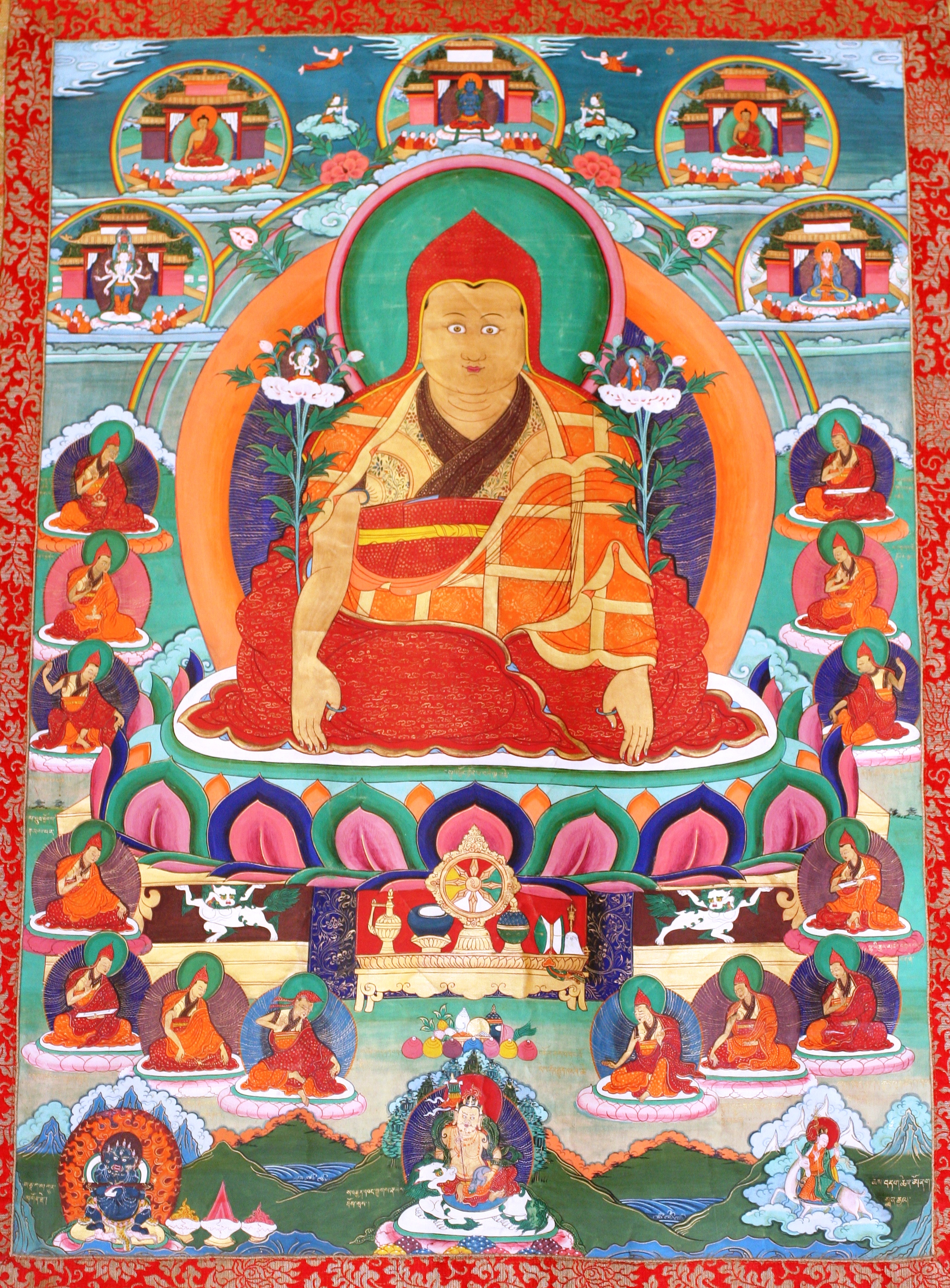|
Shentong
''Rangtong'' and ''shentong'' are two distinctive views on emptiness ( sunyata) and the two truths doctrine within Tibetan Buddhism. ''Rangtong'' (; "empty of self-nature") is a philosophical term in Tibetan Buddhism that is used to distinguish the majority Madhyamaka teaching on the meaning of śūnyatā or "emptiness", namely that all phenomena are empty of an enduring and/or unchanging essence or "self," and that this emptiness is not an absolute reality, but a mere nominal characterisation of phenomena. It is related to the '' prasangika'' approach, which argues that no syllogistic forms of reasoning should be used to debate the notion of inherent existence, but only arguments which show the logical implications and absurdity of positions based upon inherent existence. This position is the mainstream Gelugpa interpretation of Madhyamaka, one of the main Mahayana schools, which dominates Vajrayana Buddhism. ''Shentong'' (, also transliterated ''zhäntong'' or ''zhentong''; l ... [...More Info...] [...Related Items...] OR: [Wikipedia] [Google] [Baidu] |
Madhyamaka
Mādhyamaka ("middle way" or "centrism"; ; Tibetan: དབུ་མ་པ ; ''dbu ma pa''), otherwise known as Śūnyavāda ("the emptiness doctrine") and Niḥsvabhāvavāda ("the no ''svabhāva'' doctrine"), refers to a tradition of Buddhist philosophy and practice founded by the Indian Buddhist monk and philosopher Nāgārjuna (c. 150 – c. 250 CE).Wynne, Alexander (2015) ''Early Buddhist Teaching as Proto-śūnyavāda.'' Journal of the Oxford Centre for Buddhist Studies, 6. pp. 213-241. The foundational text of the Mādhyamaka tradition is Nāgārjuna's ''Mūlamadhyamakakārikā'' ("Root Verses on the Middle Way"). More broadly, Mādhyamaka also refers to the ultimate nature of phenomena as well as the non-conceptual realization of ultimate reality that is experienced in meditation. Mādhyamaka thought had a major influence on the subsequent development of the Mahāyāna Buddhist tradition. It is the dominant interpretation of Buddhist philosophy in Tibetan Buddhism and ... [...More Info...] [...Related Items...] OR: [Wikipedia] [Google] [Baidu] |
Dolpopa Sherab Gyaltsen
Dölpopa Shérap Gyeltsen () (1292–1361), known simply as Dölpopa, was a Tibetan Buddhist master. Known as "The Buddha from Dölpo," a region in modern Nepal, he was the principal exponent of the shentong teachings, and an influential member of the Jonang tradition of Tibetan Buddhism. Biography Dölpopa was born in Dölpo. In 1309, when he was seventeen, he ran away from home to seek the Buddhist teachings, first in Mustang and then in Tibet. In 1314, when he was twenty-two years old, Dölpopa received full monastic ordination from the famous abbot of Choelung Monastery, Sönam Trakpa (1273–1352), and made a vow at the time to never eat slaughtered meat again. In 1321, Dölpopa visited Jonang Monastery at Jomonang (which was later destroyed during the Cultural Revolution) for the first time. He then visited Tsurphu Monastery for the first time and had extensive discussions with Rangjung Dorje, 3rd Karmapa Lama, about doctrinal issues. It appears that the Karmapa Lama a ... [...More Info...] [...Related Items...] OR: [Wikipedia] [Google] [Baidu] |


